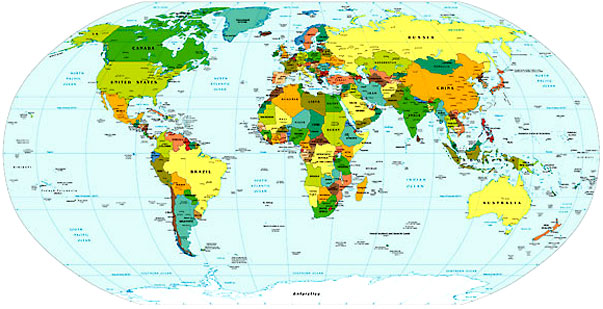 Antilles Day! Let’s celebrate! Rusty on your knowledge of the Netherlands Antilles? Well, these islands are part of the Lesser Antilles and consist of the Curaçao and Bonaire island groups, as well as Sint Eustatius, Saba and Sint Maarten (the half that belongs to the Netherlands). Phew! I can tell you that, growing up in Australia, I may have heard of some of these islands—but beyond that I wouldn’t have been able to tell you much. Anyway, the islands are an autonomous part of the Kingdom of the Netherlands. So, Queen Beatrix is their monarch. But, you know, there’s a governor and prime minister too. Oh—the Netherlands Antilles was meant to be dissolved as a unified political entity—giving constituent islands new, separate statuses, but that’s been postponed. It’ll still happen, but we don’t know when.
Antilles Day! Let’s celebrate! Rusty on your knowledge of the Netherlands Antilles? Well, these islands are part of the Lesser Antilles and consist of the Curaçao and Bonaire island groups, as well as Sint Eustatius, Saba and Sint Maarten (the half that belongs to the Netherlands). Phew! I can tell you that, growing up in Australia, I may have heard of some of these islands—but beyond that I wouldn’t have been able to tell you much. Anyway, the islands are an autonomous part of the Kingdom of the Netherlands. So, Queen Beatrix is their monarch. But, you know, there’s a governor and prime minister too. Oh—the Netherlands Antilles was meant to be dissolved as a unified political entity—giving constituent islands new, separate statuses, but that’s been postponed. It’ll still happen, but we don’t know when. The Dutch weren’t the first outsiders to take a shine to the islands of the Netherlands Antilles. No—the Spanish came along first, discovering and becoming the initial settlers for the islands. It wasn’t until the 17th century that the Dutch West India Company conquered the islands, first using them as military outposts and trade bases: welcome to the slave trade. Well, until 1863. Goodbye to the slave trade.
 Until 1954 the islands were a colonial territory. What happened in 1954? An upgrade. The islands effectively became a separate country in the Kingdom of the Netherlands. More recently Aruba, which was part of the Netherlands Antilles until 1986, became a separate country when it was granted status aparte. A few years ago the remaining segments of the Netherlands Antilles held referenda on their future ties to the Netherlands. Sint Maarten and Curaçao voted to follow in Aruba’s wake, wanting status aparte as well. Saba and Bonaire, in contrast, wanted closer ties to the Netherlands. And Sint Eustatius? Well Sint Eustatius voted to stay in the Netherlands Antilles. Not surprisingly it was the islands with the smallest populations that voted to keep things as they are or make their ties to Netherland closer, while the islands with the large populations wanted to obtain status aparte. Interestingly none of the islands had a large vote for independence—the largest was 14.2 percent for independence on Sint Maarten.
Until 1954 the islands were a colonial territory. What happened in 1954? An upgrade. The islands effectively became a separate country in the Kingdom of the Netherlands. More recently Aruba, which was part of the Netherlands Antilles until 1986, became a separate country when it was granted status aparte. A few years ago the remaining segments of the Netherlands Antilles held referenda on their future ties to the Netherlands. Sint Maarten and Curaçao voted to follow in Aruba’s wake, wanting status aparte as well. Saba and Bonaire, in contrast, wanted closer ties to the Netherlands. And Sint Eustatius? Well Sint Eustatius voted to stay in the Netherlands Antilles. Not surprisingly it was the islands with the smallest populations that voted to keep things as they are or make their ties to Netherland closer, while the islands with the large populations wanted to obtain status aparte. Interestingly none of the islands had a large vote for independence—the largest was 14.2 percent for independence on Sint Maarten. Economically there aren’t really any surprises: the Netherlands Antilles major sources of income are tourism, petroleum transhipment, oil refinement and offshore finances. Agriculture is not much of a factor—the soil’s not great, and the water supply is not exactly ample. Consumer goods come from elsewhere.
Why don’t we read a poem, class? (Gosh, I often think I should have been a primary school teacher…) The poet? Frank Martinus Arion. I found this point in a 1998 edition of Callaloo which was dedicated to literature of the Dutch Caribbean.
I fell in deep snow
If you cannot save me
Then lie down beside me
Help me weep
If only you spoke Papaimentu
I would call you my lover
As for a kiss that would save ne
But you can never be black
They told me
They all begged me
If you marry a white woman
You can’t return to your black homeland
I fell in deep snow
If you cannot save me
Then lie down beside me
Help me weep
—Frank Martinus Arion
translated for the Papiamentu by Paul Vincent
from Callaloo, “Carribean Literature from Suriname, The Netherlands Antilles, Aruba, and The Netherlands: A Special Issue” (Summer, 1998)


No comments:
Post a Comment